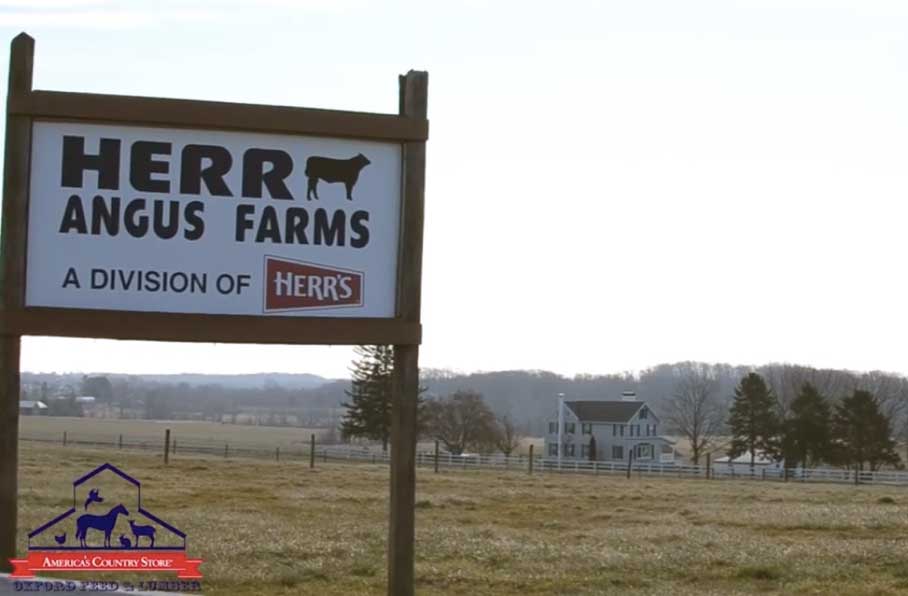A chef insists the beef has a "cheddar" flavor. Is that even possible?

But as a new Philadelphia Inquirer feature shows, Herr’s has recently become known in Eastern Pennsylvania for a product you might not expect from a snack company: its local, sustainably sourced beef.
Back in 1984, nearly 40 years after the company began, Herr’s had to figure out a way to manage their waste products, which included grey water that had been used to wash potatoes to make the chips, and waste food, like potato peelings and (mostly cosmetically) unsellable snacks. So they began watering a pasture nearby – over they years, the company had bought more than 1,000 acres of farmland adjacent to their factory – and bought 300 head of cattle to live there. The water created place for the the cattle to graze, and the company worked with nutritionists to supplement the animals’ feed with potato peelings, over-baked pretzels, and insufficiently sized chips. They call the feed “steer party mix.”
Once slaughtered, the cows were sold back into a mass-market system as beef cattle or breeding animals – that is until last year, when restaurants in Philadelphia discovered that a hyper-local, highly entertaining, and by all accounts delicious beef was being raised, sustainably, right in their backyard. Herr’s found some new customers, and today its beef is sold at a few Philadelphia restaurants and markets.
Interestingly, the chefs claim the feed lends the beef an unusual but pleasant flavor. “The party-mix finishing feed lends the more subtle things,” one chef told the Inquirer. “For example, it has an unusual toasted cheddar note, and it’s a little sweet.”
We’re a bit skeptical about that claim: A few years back, I investigated a similar claim for Popular Science, trying to figure out whether feeding an animal a specific ingredient could make that ingredient come through in the flavor of the animal’s meat. My findings indicated that it wasn’t likely to work as cleanly as that; most flavor-imparting chemical compounds are volatile and broken down by an animal’s digestive system, and even the ones that might show up in an animal’s meat are consumed in relatively small doses. If a cow’s entire diet was made up of cheddar cheese powder, it’s possible that the meat would carry a particular flavor, depending on how the animal metabolizes the specific compounds responsible for that flavor.
What’s more likely is that the Herr’s beef tastes better because it’s receiving a much higher amount of fat than other cattle. Potato chips and cheese curls have a higher fat content than most animal feed (or grass, for that matter), and ingesting higher quantities of oil does have an impact on the specific makeup of fat in the animal’s muscle tissue. It’s the same reason for the crazy marbling in the black Iberian pig, a breed fed acorns that’s responsible for the luxurious and fatty jamÁ³n ibérico. But the Iberian pig doesn’t taste like acorns; that’s just not flavor intake works, at least in these doses.
In any case, it’s pretty cool to see a company make good use of its waste, and also adorable that the cows enjoy a mix of cheese curls and potato chips as much as we do.